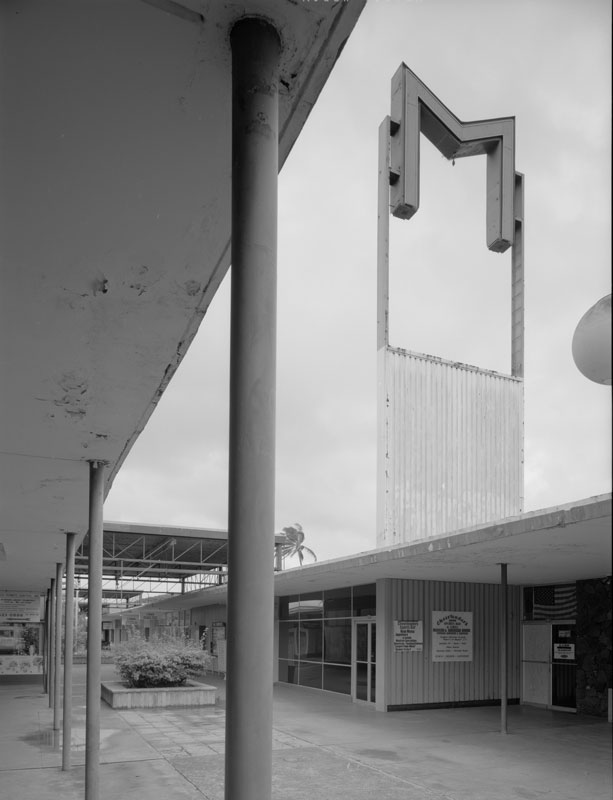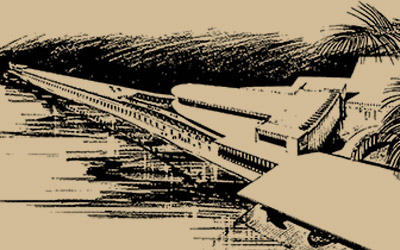Alfred Preis
Associated Architects (1945- ca.1954)Associated Architects was a loose organization of architects that formed during the war so as to appear as a large enough firm to win building opportunities from the government, the only significant employer at the time. The idea originated from Allen Johnson (1906-2000) and included his friends and colleagues and partner, Thomas Perkins (1906-1996), their acquaintance Philip Fisk (1906-1958), and his colleague and friend Vladimir Ossipoff (1907-1998). Alfred Preis, who had already hosted biweekly gatherings and goulash dinners bringing together architects and intellectuals, joined and quickly Associated Architects was formed. Members took turns designing on a rotational basis, while each architect contributed sketches, logistics, business management or critical response. Within this mutually respectful collective the main responsibility ultimately fell on the project architect. The group shared interests on various topics that ranged from urban planning, preservation of the natural environment, to educational design and social housing. They engaged in various public activities and initiated several planning proposals. The differing education and background of the members benefited each of the architects and the group quickly developed areas of individual expertise. Johnson and Perkins often took the lead in public housing projects, Fisk, Ossipoff and Preis focused on schools.
Wahiawa High School (1948) was designed by lead-architect Johnson with Preis contributing the cafeteria building. The junior and senior high schools mainly served military families and bears a utilitarian design that takes advantage of the then novel concrete blocks, reflecting the limits on materials resources during wartime. Laupāhoehoe Elementary and High School, completed in 1952 became one of Alfred Preis’s signature buildings. The University of Hawai‘i Administrative Building is one of the most celebrated projects by Associated Architects and in large parts is credited to Vladimir Ossipoff, though Alfred Preis went on to design the award-winning bookstore. There are also indications that several interiors such as the lobby bear his imprimature. Another Associated Architects project, the Maui Vocational School, demonstrated the group’s capacity to produce a pragmatic solution for an urgent need, and indicates the fluid and pragmatic relationship of the collective. Military and veteran housing projects such as Radford Terrace were mostly designed by Johnson and Perkins, yet it seems that Preis reflected their influence when designing Veteran Village later on. In the 1950s the group of Associated Architects gradually disintegrated as regular work commenced after the war and school projects ceased. One of their last collaborations was the Moanalua Shopping Center (1954) in which Alfred Preis appeared as the lead architect.

Vienna Modernism in Hawai‘i and the Bi-cultural Exchange


















